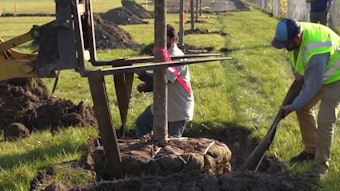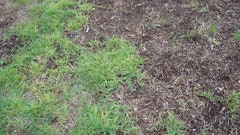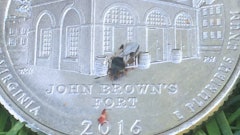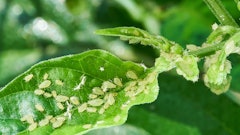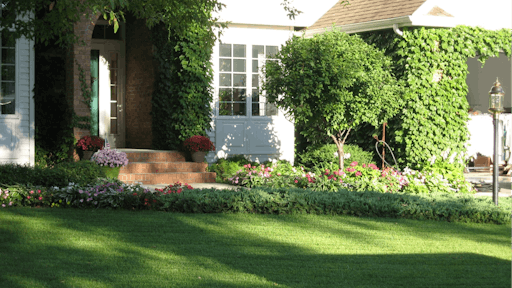
Spring is upon us and for those in lawn care it is time to start thinking about the seasonal battles with the annual grasses and weeds.
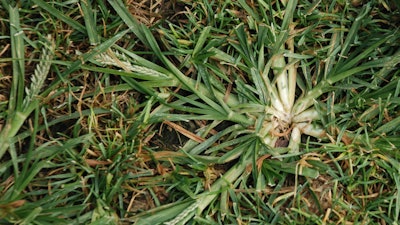 Crabgrass, goosegrass, foxtails, and annual bluegrass are the most common targets of pre-emergence herbicides.Bayer
Crabgrass, goosegrass, foxtails, and annual bluegrass are the most common targets of pre-emergence herbicides.Bayer
“These herbicides prevent weed emergence, i.e., growth and development of newly germinated weed seeds,” says Dean Mosdell, Ph.D., technical services manager, Syngenta. “The site of activity depends on the herbicide’s mode of action, but all herbicides work best if applications are made prior to germination of weed seeds.”
Though some pre-emergence herbicides will control newly emerged weeds, results can be inconsistent so products should be applied prior to germination.
Rob Golembiewski, Ph.D. Green Solutions Specialist, Bayer says some preemergence herbicides will also control annual broadleaf weeds if applied prior to emergence. “For instance, Specticle FLO (Bayer) controls a wide variety of annual grassy, broadleaf, and sedge weeds prior to germination in ornamental beds and warm-season lawns,” he notes.
Timing is everything
A late winter to early spring application is suggested to combat crabgrass and other summer annuals. Conversely, a late summer to early fall application is required to control winter annuals like Poa annua (annual bluegrass).
Mosdell says some pre-emergence herbicides have limited post-emergence activity on certain weeds. For example, Barricade brand herbicides (prodiamine) can control crabgrass in the one- to three-leaf stage. By comparison, Tenacity herbicide has both pre- and post-emergence activity on annual weeds, which can allow for more flexibility on timing.
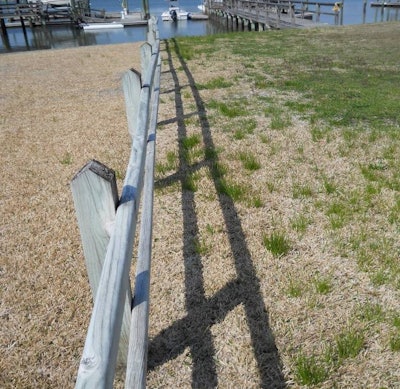 Bayer
Bayer
Mosdell explains that soil-active herbicides need to be moved into the soil, the weed germination zone, by irrigation or rainfall. Additionally, some pre-emergence herbicides can be photosensitive.
“Sometimes a preemergence herbicide is just not that strong on a particular weed,” Golembiewski says.
Weeds already emerged, perennial grassy or broadleaf weeds, should be treated with a postemergence herbicide. He notes that it is important to use tank mixes with multiple sites of action to limit resistance chances, so combining a PRE and a POST like Bayer’s PRE3 accomplishes this.
Since most LCOs operate on rounds, pre-emergence herbicide applications must be completed in the round prior to target weed germination.
Best practices
A few basic factors to consider when selecting and applying a pre-emergence herbicide include turf species to be treated, target weeds and any documented herbicide resistance.
“Pre-emergence herbicides will help control newly germinated seeds, so apply early,” Mosdell says. “Know when the target weeds germinate from seeds.” For example, he says annual weeds have a specific window for germination.
Also, some turf species, such as St. Augustine grass, centipede grass and bentgrasses, are more sensitive to pre-emergence herbicides. Application rates vary based on turf species. “It is important to read and follow all label directions as herbicides may be labeled for use on cool or warm-season turf or both,” Golembiewski explains.
In addition, he says herbicide resistance is becoming more of an issue especially with the more prolific annuals like goosegrass and especially annual bluegrass in golf turf. “Because of this, we at Bayer often recommend our PRE3 tank mix of Specticle FLO, Tribute Total, and simazine on sites where Specticle has been used exclusively for years for annual bluegrass control.”
Once a review of the turf, weeds and resistance had been done, a determination must also be made of use of liquid or granular products. Either can be effective.
 Rob Golembiewski, Ph.D. Green Solutions Specialist, Bayer put together this breakdown of the pros and cons of liquid vs granular pre-emergence herbicide applications.Bayer
Rob Golembiewski, Ph.D. Green Solutions Specialist, Bayer put together this breakdown of the pros and cons of liquid vs granular pre-emergence herbicide applications.Bayer
If using granular, Golembiewski suggests professionals choose spreadable products with smaller granules and ensure accurate and complete coverage with lawn guns or hand sprayers.
“There shouldn’t be a difference in the efficacy of liquid vs. granular pre-emergence herbicide applications, assuming the granular product is comprised of a particle size and active ingredient concentration that provide an effective distribution rate on turf,” Mosdell says. “Proper selection of a granular formulation, particle size and active ingredient loading rate can all impact performance.”
Also, when using granular products, he says spreaders need to be calibrated frequently with heavy use, and granule clean-up from sidewalks and driveways can take time. Barricade herbicides are available on a fertilizer granule from multiple formulators.
Conversely, Mosdell says liquid applications allow for spot treatments of areas with greater weed pressure, such as near sidewalks and driveways. However, such applications require large amounts of water to apply.
Lastly, when applying pre-emergence herbicide or other chemical products, Mosdell and Golembiewski each emphasized the importance to always read and follow label instructions. Some products may not be registered for sale or use in all states or counties and/or may have state-specific use requirements. Check with your local extension service to ensure registration and proper use.





